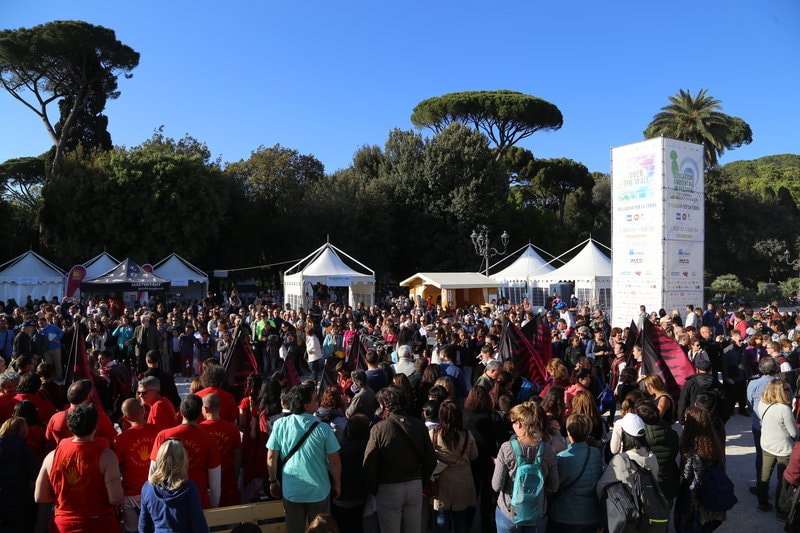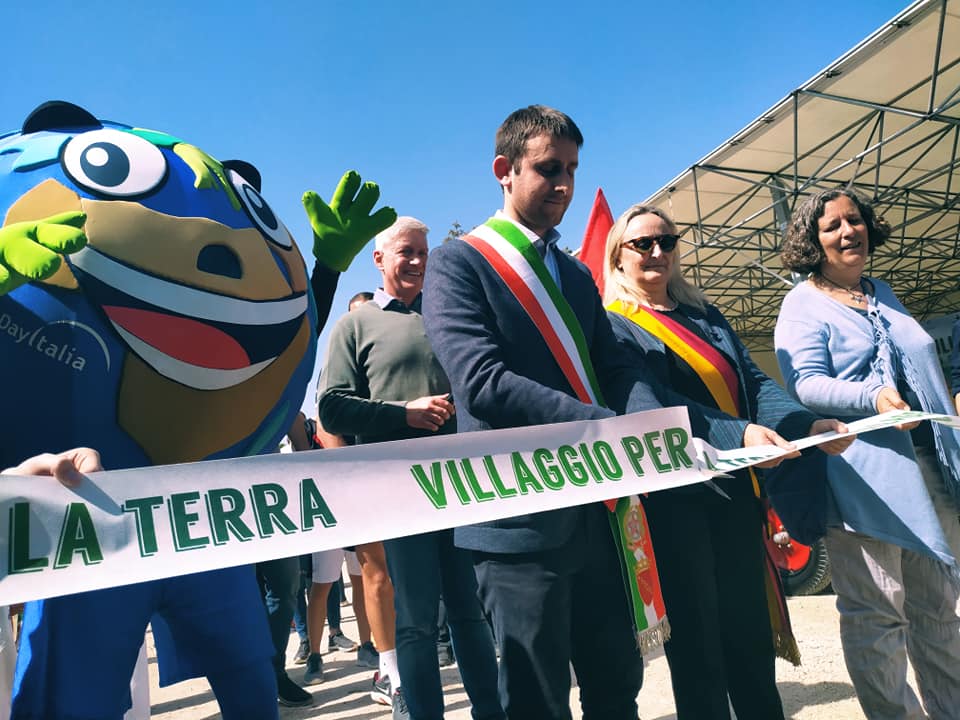
Earth Village: care for Creation is our common goal
Rome, Italy ‘Caring for the earth and for the people who live on it. Identifying common goals and ways of making progress towards those goals.’ This is the shared purpose drawing a host of associations, professionals, civil and ecclesial institutions to Villa Borghese in the heart of Rome, from 25-29 April, to form an “Earth Village” for the fourth year running. Promoted by Earth Day Italia and the Focolare Movement, this annual event aims to support the 17 Sustainable Development Goals set by the United Nations 2030 Agenda and to promote the principles expressed in Pope Francis’ encyclical “Laudato Sì – on care for our common home”. Anthonia Testa, from the Focolare Movement in Rome, explains how they linked up with Earth Day Italia. “It goes back to November 2015 when we participated in the Laudato Sì march which Earth Day had been asked to organize. At that time, we were planning our next annual Focolare gathering, the Mariapolis, hoping to hold it in the heart of Rome, as our foundress Chiara Lubich had wished. Earth Day Italia invited us to locate the Mariapolis where and when they’ve been celebrating World Earth Day for many years. It was a truly providential meeting between an organization dedicated to awaking public awareness of environmental issues and us, a people passionately committed to making change on many fronts and to promoting all that is good and beautiful in the city of Rome”.  The Pope visited the “Village” in 2016 and he encouraged those present to remain firm in their commitment to “transform the desert into forest”. He was not only referring to the physical environment, but also to those human situations where life is under threat … “The Pope spoke about social friendship. He had before him this group of people which included immigrants, imams, ex-convicts, young people recovering from addictions – a forest which is not uniform, not neat and tidy but full of life. The phrase ‘transform the deserts into forest’ has become our mission”. How does the “Earth Village” hope to respond to the Pope’s appeal? The “Village” aims to be a model, a place where everyone can feel part of a community. A place where it’s possible to build solid relationships, which are at the root of an integrated ecological approach. A place where no-one’s contribution is considered small if it’s shared. A place which welcomes the commitment to reach sustainable goals in economic development.” Motivated by Laudato Sì and the UN’s 2030 Agenda, this year particular attention is being paid to the Amazon. What prompted this choice? “The Amazon symbolizes cultural biodiversity both environmentally and ethically. In October there will be the Synod of Catholic Bishops for the Amazon region. In the light of this, the “Village” aims to focus on these aspects and on the Church’s action in this area. Participating in the Village are the Capuchin Franciscans who have animated a Mission in the Amazon region for over 100 years, Survival International which for 50 years has worked to support indigenous tribes, and the Pontifical Council for Culture’s consultation body ‘Courtyard of the Gentiles’.”
The Pope visited the “Village” in 2016 and he encouraged those present to remain firm in their commitment to “transform the desert into forest”. He was not only referring to the physical environment, but also to those human situations where life is under threat … “The Pope spoke about social friendship. He had before him this group of people which included immigrants, imams, ex-convicts, young people recovering from addictions – a forest which is not uniform, not neat and tidy but full of life. The phrase ‘transform the deserts into forest’ has become our mission”. How does the “Earth Village” hope to respond to the Pope’s appeal? The “Village” aims to be a model, a place where everyone can feel part of a community. A place where it’s possible to build solid relationships, which are at the root of an integrated ecological approach. A place where no-one’s contribution is considered small if it’s shared. A place which welcomes the commitment to reach sustainable goals in economic development.” Motivated by Laudato Sì and the UN’s 2030 Agenda, this year particular attention is being paid to the Amazon. What prompted this choice? “The Amazon symbolizes cultural biodiversity both environmentally and ethically. In October there will be the Synod of Catholic Bishops for the Amazon region. In the light of this, the “Village” aims to focus on these aspects and on the Church’s action in this area. Participating in the Village are the Capuchin Franciscans who have animated a Mission in the Amazon region for over 100 years, Survival International which for 50 years has worked to support indigenous tribes, and the Pontifical Council for Culture’s consultation body ‘Courtyard of the Gentiles’.”  Meeting people in different environments and situations is a means of evangelization .. “It makes me think of Chiara Lubich words: ‘to lose ourselves in the crowd in order to fill it with the divine’. In the “Village” there are around 200 different associations and dozens of expert speakers, sporting personalities, artists as well as all the people passing through. You have only one ‘instrument’, your heart. And the commitment held in common to love everyone. Many times we really see deserts being transformed into forest, and we cannot but recognize God’s intervention. Personal relationships mature and the pearls of the Gospel can be sown: love in action, social engagement, care for the vulnerable, reciprocity.” Young people are very much in the front line in wanting to protect the environment. What is their role in the Earth Village? “29 April sees children and young people with their schools and universities focusing on the 17 United Nations Goals, through the ‘learning service’. This is a voluntary service launched last year with the Catholic University of the Sacred Heart in Rome. This year it welcomes participants from all the pontifical universities and also students from other countries through the support of the Fondazione Scholas Occurrentes.
Meeting people in different environments and situations is a means of evangelization .. “It makes me think of Chiara Lubich words: ‘to lose ourselves in the crowd in order to fill it with the divine’. In the “Village” there are around 200 different associations and dozens of expert speakers, sporting personalities, artists as well as all the people passing through. You have only one ‘instrument’, your heart. And the commitment held in common to love everyone. Many times we really see deserts being transformed into forest, and we cannot but recognize God’s intervention. Personal relationships mature and the pearls of the Gospel can be sown: love in action, social engagement, care for the vulnerable, reciprocity.” Young people are very much in the front line in wanting to protect the environment. What is their role in the Earth Village? “29 April sees children and young people with their schools and universities focusing on the 17 United Nations Goals, through the ‘learning service’. This is a voluntary service launched last year with the Catholic University of the Sacred Heart in Rome. This year it welcomes participants from all the pontifical universities and also students from other countries through the support of the Fondazione Scholas Occurrentes.
Claudia Di Lorenzi
